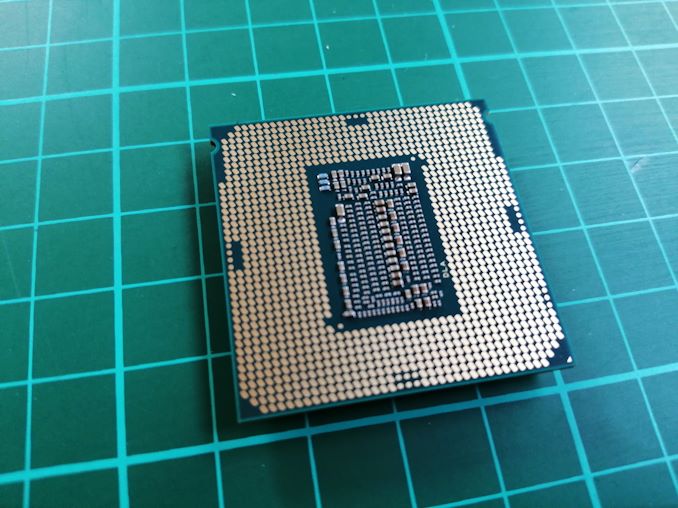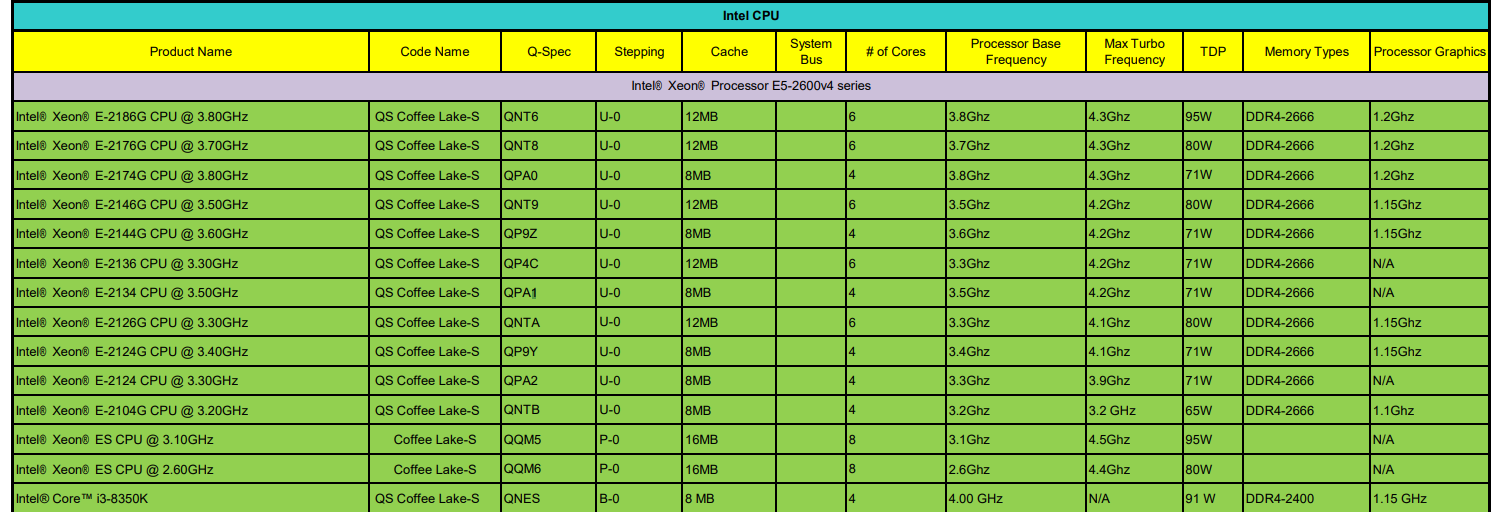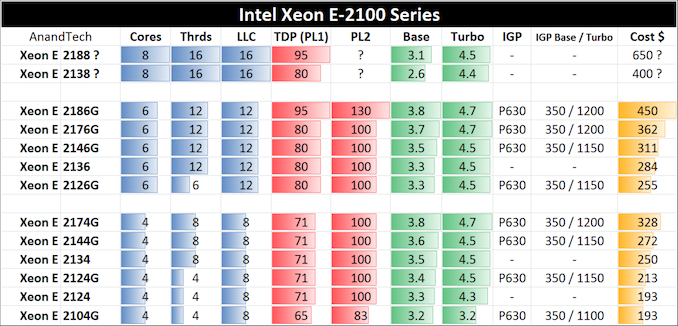Intel Has 8-Core Xeon-E at Engineering Sample Stage
by Ian Cutress on November 26, 2018 12:01 PM EST
One of the interesting omissions from the re-release of Xeon E a couple of weeks ago were the 8-core versions. Intel reiterated its 4-core and 6-core parts, and given the recent release of 8-core processors for consumers we were expecting to see 8-core parts hit the primetime for the commercial market as well. Intel doesn’t officially comment on potential future parts, however one of Intel’s partners has a pair of Xeon E 8-core processors listed in the QVL section of one of its new C242/C246 motherboards.
The new processors are listed as ‘ES’, or engineering samples. Normally the final stage ES processors, we believe to be called ‘ES1/ES2’ parts in Intel internal lingo, are the step before full commercial products, listed as QS. These parts have an almost full range of specifications listed, as follows:
Neither parts have names listed in the QVL list, although we hazard a guess that if they both follow the current naming scheme for Xeon E, the top end model without integrated graphics will be the E-2188 and the secondary one will be the E-2138. This means that E-21 for the family, the final digit for the number of cores, and the third digit for its position in the stack.
The top part shows an 8-core processor with a 3.1 GHz base frequency, a 4.5 GHz turbo frequency, and a 95W TDP. It has 16 MB of L3 cache (2MB/core), is listed as the P-0 stepping, and it looks like the memory frequency isn’t finalized yet, although we suspect it to be DDR4-2666, supporting ECC UDIMMs. Pricing isn’t listed, but going by previous highest core count Xeon E parts, we suspect this to be in the $650 price range.
The other 8-core part has a 2.6 GHz base frequency, a 4.4 GHz turbo frequency, and an 80W TDP. The lower base frequency is in part in conjunction with the lower TDP. This processor also does not have integrated graphics, nor a supported memory listed, but also has 16 MB of L3 cache.
Timeline for availability is unknown. However, reaching ES stage is usually a good sign that these processors will come to market soon.
Related Reading
- Intel Xeon E Six-Core Review: E-2186G, E-2176G, E-2146G, and E-2136 Tested
- The Supermicro X11SCA-W Motherboard Review: For Entry Level Xeon
- ASRock Launches C246M WS Micro-ATX Motherboard for Xeon E CPUs
- Intel Launches Coffee Lake Xeon E (Entry): The Next-Gen E3-1200












19 Comments
View All Comments
mode_13h - Tuesday, November 27, 2018 - link
None of the Xeon E series, nor the E3 which preceded it ever sold for $1k, or even close to it.Check the price list in this article: https://www.anandtech.com/show/12199/intel-launche...
HStewart - Monday, November 26, 2018 - link
Are these Xeons using the Scalable Architecture instead Ring Architecture in the desktops chips.?The newer Scalable architecture is suppose to be significantly better in performance than the Ring Architecture because how CPU cores communicate to bus.
The following article has some information - but does not go into detail on actual scalable part
and only limits it to two processors - I believe the real advantage is when more than 2P is used.
https://www.servethehome.com/the-new-intel-mesh-in...
ilt24 - Monday, November 26, 2018 - link
"Are these Xeons using the Scalable Architecture"No as the table in the article says they are Xeon's based on Coffee Lake chips.
Ian Cutress - Monday, November 26, 2018 - link
No, as mentioned in all our other Xeon E articles.HStewart - Monday, November 26, 2018 - link
Ok thanks - it would be nice to see difference between scalable and non scalable architectures.Ian Cutress - Monday, November 26, 2018 - link
We did this back in June 2017.https://www.anandtech.com/show/11550/the-intel-sky...
mode_13h - Tuesday, November 27, 2018 - link
Sigh. I'm honestly surprised you didn't know this, but I guess some people don't really pay much attention to Xeons.iwod - Tuesday, November 27, 2018 - link
So they are lacking in Wafer Capacity, and also trying to increase core count, hence Die Size?Someone should ask Intel's management at the next Investor meeting.
mode_13h - Tuesday, November 27, 2018 - link
Right comment, wrong article. Try here:https://www.anandtech.com/show/13400/intel-9th-gen...
Or here:
https://www.anandtech.com/show/13539/the-intel-cor...
The Xeon E series is basically just their mainstream desktop CPUs, with a few less features disabled that are primarily of interest for entry-level workstations and small servers. If you upset with their die size strategy, then you ought to criticize their decision to increase core counts in their mainstream desktop CPUs and their decision to move the entire Xeon W line to HCC dies.